
TORPEDO BOAT TA 36 STELLA POLARE
DEPTH: 45 - 65 m
SKILL: Expert
TA 36 (ex-Stella Polare); escort destroyer (torpedo boat); German Navy
Built: Cantieri Navali di Quarnaro, Rijeka, launched 11th July 1943, entered service 15th January 1944
Sunk: 18th March 1944 (navigational error – hit a mine)
Dimensions: l=82.26 m, w=8.5 m, h=2.8 m
Coordinates: 45.13340° N, 14.22770° E
Location: about 800 m S of Brestova quay
Access: 2/5 access is solely by boat (the location is in the open sea)
Visibility: 3/5 very variable, occasionally exceptional
Current: 3/5 moderate
Flora and fauna: 4/5 varied life on and around the wreck, occasionally specimens of large fish
HISTORY:
For the protection of their merchant ships, the Italian Royal Navy, at the start of the Second World War, built a large number of destroyers, torpedo boats (smaller sized destroyers designed to escort convoys and battle against submarines) and corvettes (ships designed specifically to fight against submarines).
Until the capitulation of Italy (9th September 1943) only one ship was completed and handed over to the Italian Royal Navy. All the remaining vessels were in the shipyards in varying phases of construction were impounded by the Germans who soon occupied the region. One of the first ships which were completed in the shipyard of Rijeka was the Stella Polare, for which the Germans assigned the official identification TA 36 (TA meaning “Torpedoboot, Ausland” in German “a torpedo boat of foreign origin”).
The TA 36 entered official German service on 15th January 1944 and was deployed in the 11th flotilla for securing the base of Trieste. It participated in many missions escorting cargo ships along the Adriatic coast. The TA 36 participated in the tasks of mine laying, mostly as security for the minelayer Kiebitz (ex-Ramb III, and after the war Tito’s Galeb). On 18th March 1944 the minelayer Kiebitz sailed from Trieste with the mission to lay mines in the Kvarner region. As security the TA 36 (ex-Stella Polare), the TA 21 (ex-Insidioso) and the corvette UJ 205 (ex-Colubrina) sailed alongside. In the afternoon of the same day when the ships were passing the Cape of Kamenjak, the TA 36 sailed ahead so as mark the correct position from where the laying of minefields should begin. At exactly 1710 hrs., when the ship was at the level of the Cape of Mašnjak at the entrance of the Bay of Plomin, it came across a mine. The powerful explosion blew to pieces the front part of the ship all the way to the bridge. The ship sank in a very short time (it disappeared from the surface in just 1-2 minutes!), so that there was no time to take measures to rescue the ship. According to the statement from Von Kleist, despite the short time the crew abandoned the ship with discipline. Some members of the crew reached the shore by swimming, whilst the majority of the crew were rescued by other ships in the unit.
Immediately after the sinking of the TA 36 the admiral of the Adriatic ordered a detailed investigation. According to the statement by the commander of the flotilla the ship sank because it struck a mine, probably detached from a minefield. The position of the sunken ship which given by the commander during the investigation was in fact incorrect, we only found it later, and in a considerably more northern position. Today it is obvious that the commander had deliberately given the wrong information, so as to cover up a navigational error.
WRECK CONDITION AND DIVING:
The wreck of the TA 36 today lies in an upright position on the silty bottom at a depth of about 65 metres. The ship’s bow is about 150 metres away from the main wreckage and lies on its left side. The ship is broken immediately in front of the bridge, exactly at the level of the forward guns. The mine probably exploded under the ammunition magazine of that gun, which resulted in the instant explosion of the ammunition which ripped apart the front part of the ship. However, from the bridge all the way back to the stern of the ship is remarkably well-preserved, so that all the equipment and armament are still in place as though during the time of sailing. The bridge was severely damaged with the explosion; its roof was destroyed, and is covered with masses of fishing nets. The main mast with its signalling crossbars is, completely intact, as is the funnel from where the barrels of anti-aircraft guns protrude towards the surface. In the middle of the ship are two triple-tube torpedo launchers, the tubes of which are slightly tilted towards the side of the ship. Above them there once led a narrow walkway, the remains of which now lay over the torpedo launchers. In the tubes can still be seen torpedoes with their tips protruding from the mouths of the tubes.
The bow of the ship is situated west of the main wreck. It is about 15 metres in length and lies on its left side. From the undamaged fuel tanks in the bow a fuel leak was noticed in August 2011, which resulted in the pollution of the Istrian coast around Rabac. The leak occurred in one of the pipes on the deck, through which a crack leaked a large volume of petroleum. It is not known how much fuel is left in the tank, but considering the overall capacity of the tanks on the boat, it could be anything from a few hundred litres to several tonnes of fuel left in the tank. Concreting the damaged parts has prevented the further leaking of petroleum. The bow itself is not interesting as an object for diving, since near to the seabed there is a constant layer of very muddy water which reduces visibility to only a few metres.
Note: The TA 36 (ex-Stella Polare) is considered a war grave, and as it is one of the best preserved wreck of a warship in the Adriatic, its location is protected and diving can only be carried out through authorised diving centres.
The description and illustrations are a courtesy of Danijel Frka and Jasen Mesić. Buy the whole book here: https://shop.naklada-val.hr/product_info.php?products_id=561
Built: Cantieri Navali di Quarnaro, Rijeka, launched 11th July 1943, entered service 15th January 1944
Sunk: 18th March 1944 (navigational error – hit a mine)
Dimensions: l=82.26 m, w=8.5 m, h=2.8 m
Coordinates: 45.13340° N, 14.22770° E
Location: about 800 m S of Brestova quay
Access: 2/5 access is solely by boat (the location is in the open sea)
Visibility: 3/5 very variable, occasionally exceptional
Current: 3/5 moderate
Flora and fauna: 4/5 varied life on and around the wreck, occasionally specimens of large fish
HISTORY:
For the protection of their merchant ships, the Italian Royal Navy, at the start of the Second World War, built a large number of destroyers, torpedo boats (smaller sized destroyers designed to escort convoys and battle against submarines) and corvettes (ships designed specifically to fight against submarines).
Until the capitulation of Italy (9th September 1943) only one ship was completed and handed over to the Italian Royal Navy. All the remaining vessels were in the shipyards in varying phases of construction were impounded by the Germans who soon occupied the region. One of the first ships which were completed in the shipyard of Rijeka was the Stella Polare, for which the Germans assigned the official identification TA 36 (TA meaning “Torpedoboot, Ausland” in German “a torpedo boat of foreign origin”).
The TA 36 entered official German service on 15th January 1944 and was deployed in the 11th flotilla for securing the base of Trieste. It participated in many missions escorting cargo ships along the Adriatic coast. The TA 36 participated in the tasks of mine laying, mostly as security for the minelayer Kiebitz (ex-Ramb III, and after the war Tito’s Galeb). On 18th March 1944 the minelayer Kiebitz sailed from Trieste with the mission to lay mines in the Kvarner region. As security the TA 36 (ex-Stella Polare), the TA 21 (ex-Insidioso) and the corvette UJ 205 (ex-Colubrina) sailed alongside. In the afternoon of the same day when the ships were passing the Cape of Kamenjak, the TA 36 sailed ahead so as mark the correct position from where the laying of minefields should begin. At exactly 1710 hrs., when the ship was at the level of the Cape of Mašnjak at the entrance of the Bay of Plomin, it came across a mine. The powerful explosion blew to pieces the front part of the ship all the way to the bridge. The ship sank in a very short time (it disappeared from the surface in just 1-2 minutes!), so that there was no time to take measures to rescue the ship. According to the statement from Von Kleist, despite the short time the crew abandoned the ship with discipline. Some members of the crew reached the shore by swimming, whilst the majority of the crew were rescued by other ships in the unit.
Immediately after the sinking of the TA 36 the admiral of the Adriatic ordered a detailed investigation. According to the statement by the commander of the flotilla the ship sank because it struck a mine, probably detached from a minefield. The position of the sunken ship which given by the commander during the investigation was in fact incorrect, we only found it later, and in a considerably more northern position. Today it is obvious that the commander had deliberately given the wrong information, so as to cover up a navigational error.
WRECK CONDITION AND DIVING:
The wreck of the TA 36 today lies in an upright position on the silty bottom at a depth of about 65 metres. The ship’s bow is about 150 metres away from the main wreckage and lies on its left side. The ship is broken immediately in front of the bridge, exactly at the level of the forward guns. The mine probably exploded under the ammunition magazine of that gun, which resulted in the instant explosion of the ammunition which ripped apart the front part of the ship. However, from the bridge all the way back to the stern of the ship is remarkably well-preserved, so that all the equipment and armament are still in place as though during the time of sailing. The bridge was severely damaged with the explosion; its roof was destroyed, and is covered with masses of fishing nets. The main mast with its signalling crossbars is, completely intact, as is the funnel from where the barrels of anti-aircraft guns protrude towards the surface. In the middle of the ship are two triple-tube torpedo launchers, the tubes of which are slightly tilted towards the side of the ship. Above them there once led a narrow walkway, the remains of which now lay over the torpedo launchers. In the tubes can still be seen torpedoes with their tips protruding from the mouths of the tubes.
The bow of the ship is situated west of the main wreck. It is about 15 metres in length and lies on its left side. From the undamaged fuel tanks in the bow a fuel leak was noticed in August 2011, which resulted in the pollution of the Istrian coast around Rabac. The leak occurred in one of the pipes on the deck, through which a crack leaked a large volume of petroleum. It is not known how much fuel is left in the tank, but considering the overall capacity of the tanks on the boat, it could be anything from a few hundred litres to several tonnes of fuel left in the tank. Concreting the damaged parts has prevented the further leaking of petroleum. The bow itself is not interesting as an object for diving, since near to the seabed there is a constant layer of very muddy water which reduces visibility to only a few metres.
Note: The TA 36 (ex-Stella Polare) is considered a war grave, and as it is one of the best preserved wreck of a warship in the Adriatic, its location is protected and diving can only be carried out through authorised diving centres.
The description and illustrations are a courtesy of Danijel Frka and Jasen Mesić. Buy the whole book here: https://shop.naklada-val.hr/product_info.php?products_id=561


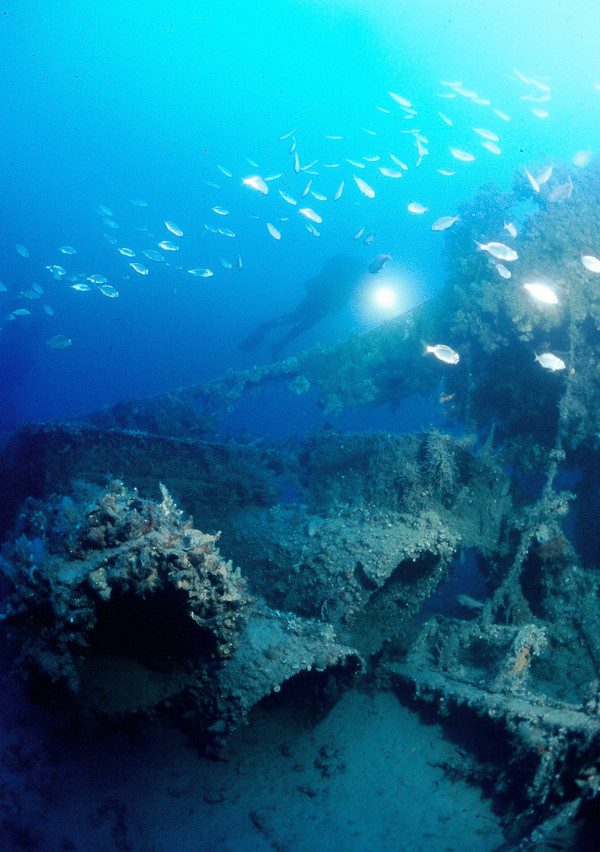
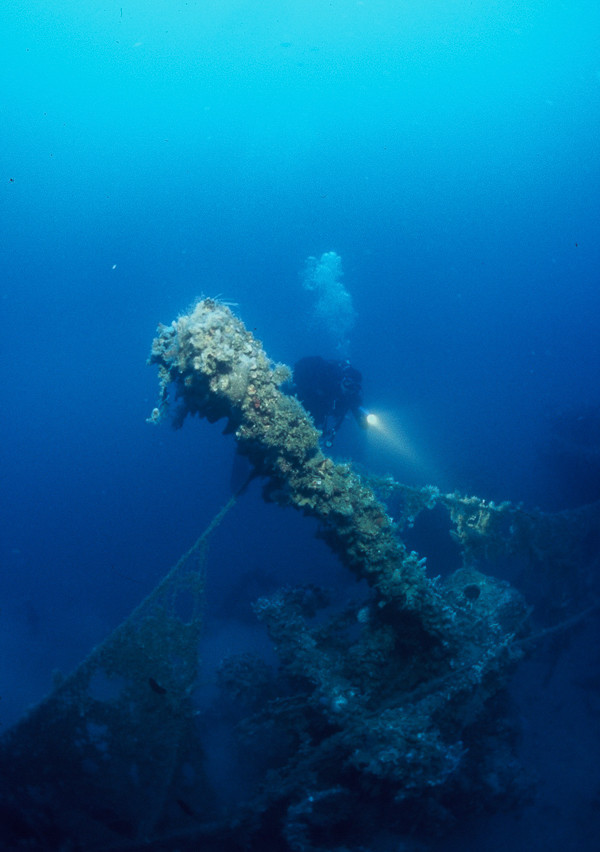
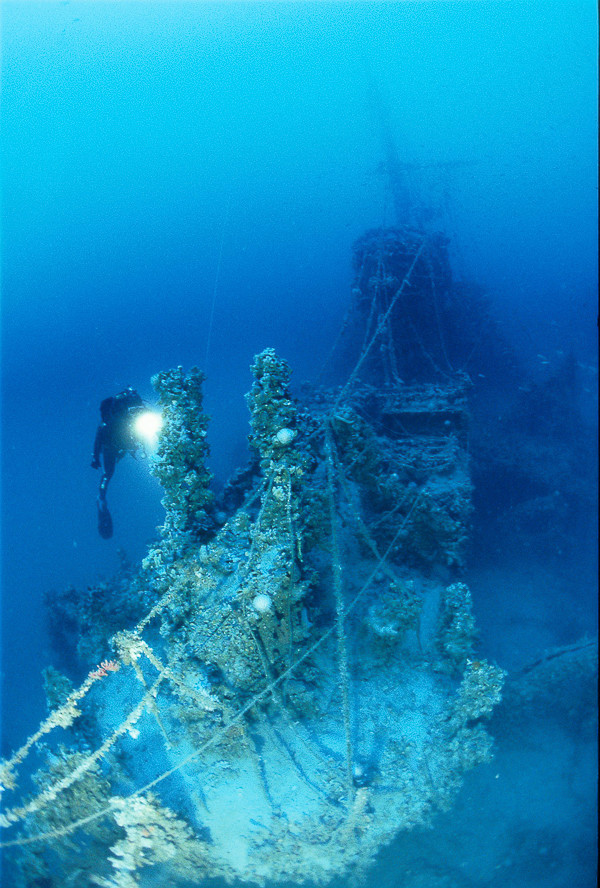
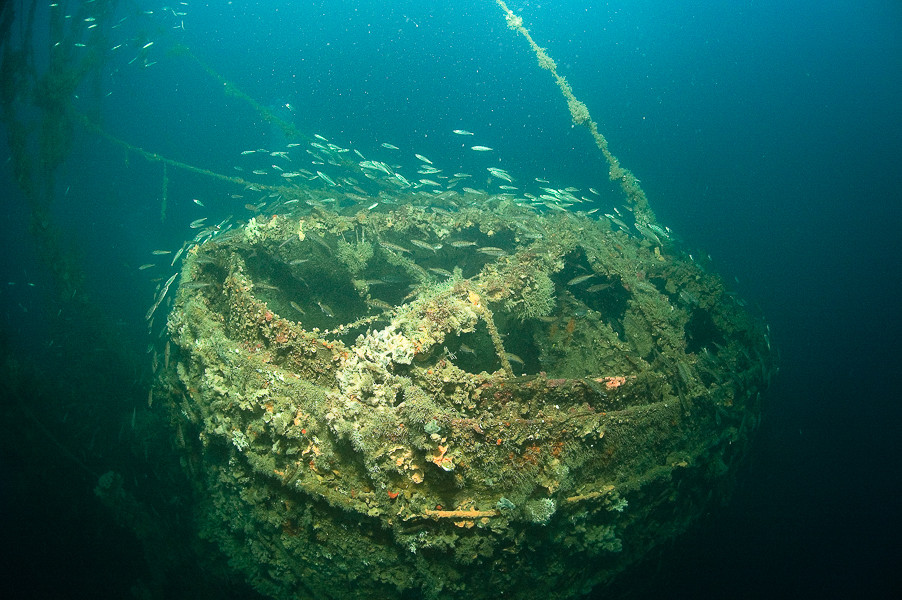

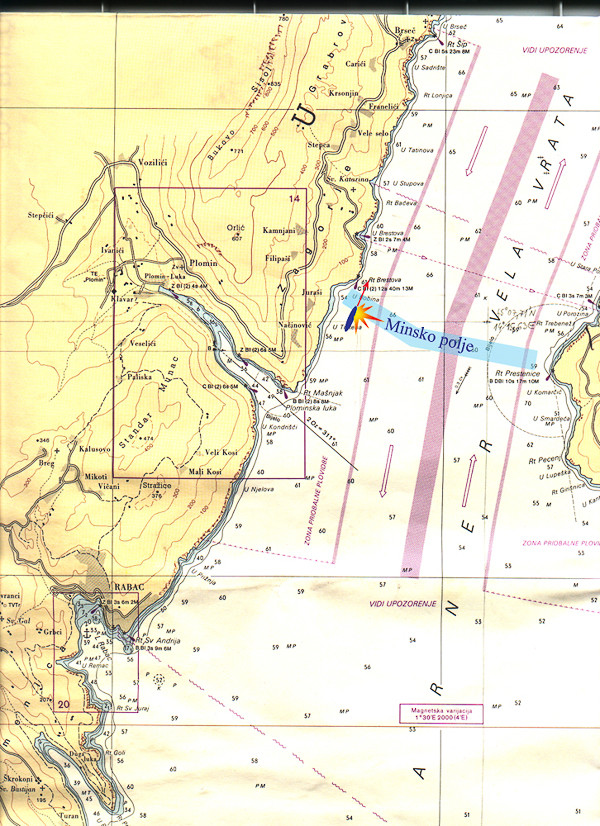
 The investment is co-financed by the Republic of Slovenia and the European Union from the European Regional Development Fund.
The investment is co-financed by the Republic of Slovenia and the European Union from the European Regional Development Fund.  H2O Globe BETA
H2O Globe BETA